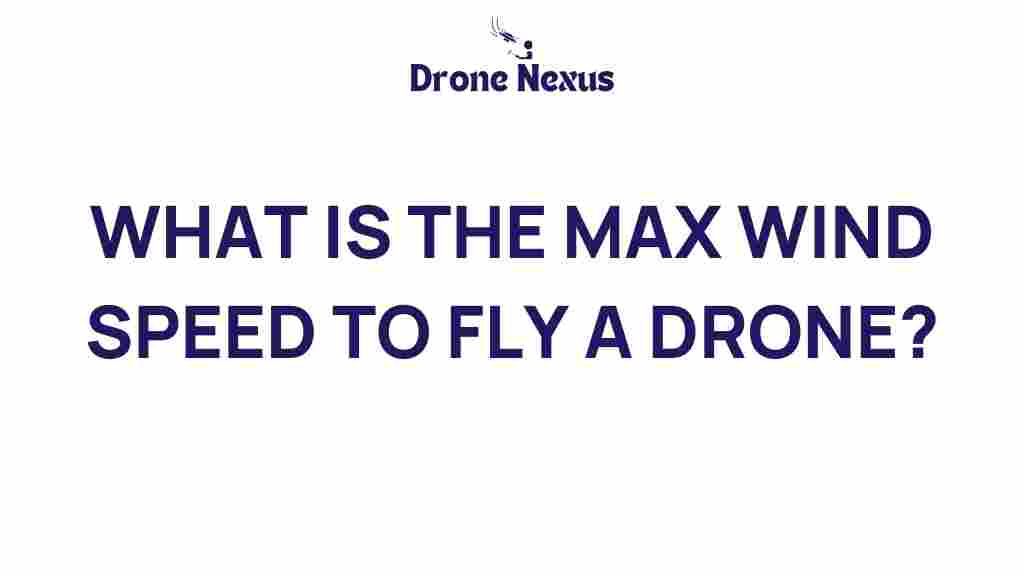What is the Maximum Wind Speed for Safe Drone Flight?
Drone flight has become increasingly popular for both recreational and commercial purposes. However, one of the most critical factors that can affect the safety and performance of a drone is wind speed. Understanding the maximum wind speed for safe drone flight is essential for operators to ensure that they maintain control of their drones and prevent accidents. In this article, we will explore various aspects of drone flight and wind conditions, providing a comprehensive guide for safe flying.
Understanding Drone Flight and Wind Conditions
Drone flight involves navigating an unmanned aerial vehicle (UAV) through the air, which can be influenced by several environmental factors, including wind. Wind can affect a drone’s stability, battery life, and overall performance. Knowing how to assess wind conditions is crucial for both hobbyists and professionals.
The Relationship Between Wind Speed and Drone Performance
Wind speed can have a significant impact on various aspects of drone performance, including:
- Stability: High winds can cause drones to become unstable, making it difficult to control their movements.
- Battery Life: Drones may consume more battery power when flying against strong winds, reducing flight time.
- Payload Capacity: Wind can affect the amount of weight a drone can carry, especially during adverse conditions.
- Camera Quality: For drones equipped with cameras, high winds can lead to shaky footage, impacting the quality of the images or videos captured.
What is Considered Safe Wind Speed for Drone Flight?
Generally, the maximum wind speed for safe drone flight varies based on the type of drone being used. Here are some general guidelines:
- Lightweight Drones: For small, lightweight drones, wind speeds of 5-10 mph (8-16 km/h) are generally considered safe.
- Mid-Weight Drones: Mid-weight drones can handle wind speeds of up to 15-20 mph (24-32 km/h) without significant issues.
- Professional Drones: Heavy-duty drones and those used for commercial purposes can often withstand winds of 25-30 mph (40-48 km/h) or more.
It’s essential to check the manufacturer’s specifications for your specific drone model, as this will provide more precise guidelines for safe operation in windy conditions.
Factors Affecting Wind Safety in Drone Flight
Several factors can influence how wind affects drone flight. These include:
- Drone Design: The design and weight of the drone play a significant role in how it responds to wind. Heavier and more aerodynamic drones tend to handle wind better than lighter models.
- Flight Experience: Experienced pilots may handle windy conditions better than novices. Skill level plays a crucial role in maintaining control in challenging conditions.
- Environmental Conditions: Obstacles like trees, buildings, and hills can cause wind turbulence, making it more challenging to fly safely.
Step-by-Step Process for Assessing Wind Conditions Before Drone Flight
Before embarking on a drone flight, it’s essential to assess the wind conditions thoroughly. Follow this step-by-step process:
- Check Weather Reports: Use weather apps or websites to get accurate wind speed forecasts for your flying location.
- Observe the Environment: Look for signs of wind, such as moving leaves, flags waving, or ripples on water surfaces.
- Conduct a Test Flight: If conditions seem borderline, conduct a short test flight at low altitude to assess how the drone handles the wind.
- Review Manufacturer Guidelines: Refer to your drone’s user manual for specific wind speed recommendations.
Troubleshooting Tips for Windy Conditions During Drone Flight
If you find yourself in a windy situation during a drone flight, consider these troubleshooting tips:
- Reduce Payload: If possible, reduce the weight of the drone by removing any unnecessary equipment.
- Adjust Flight Path: Fly into the wind to maintain control, and avoid flying sideways or directly against strong gusts.
- Lower Altitude: Consider flying at a lower altitude where wind speeds may be reduced.
- Be Ready to Land: If conditions worsen, be prepared to land the drone immediately to avoid loss of control.
Legal Considerations and Regulations
In addition to understanding wind conditions, drone operators must also be aware of legal regulations governing drone flight. In many regions, there are specific rules regarding flying drones in certain weather conditions. It’s essential to check with local aviation authorities and comply with any regulations that may affect your drone flight.
For additional information on drone regulations, you can visit the FAA’s official website.
Conclusion
Understanding the maximum wind speed for safe drone flight is essential for ensuring the safety of both the operator and the drone. By being aware of the various factors affecting wind conditions and following the outlined steps for assessing these conditions, drone pilots can enhance their flying experience and reduce the risk of accidents. Always prioritize safety, adhere to manufacturer guidelines, and stay informed about local regulations to make the most out of your drone flight.
For more tips on drone flying and safety, check out our related article on drone safety practices.
This article is in the category Safety and created by DroneNexus Team
